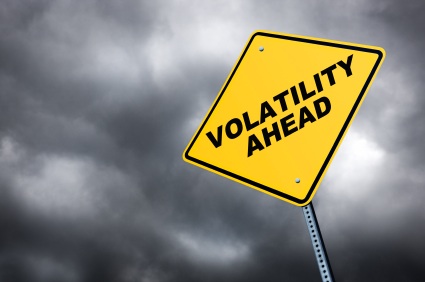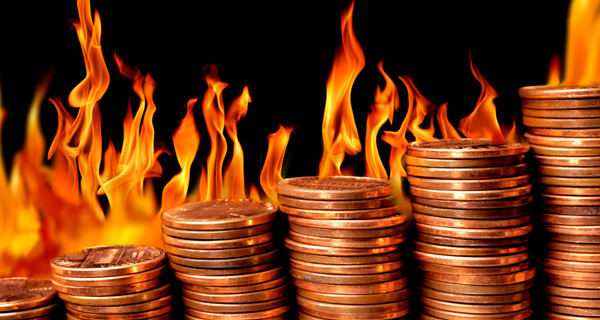Tag: buy penny stocks
Should You Pay A Subscription for Good Penny Stocks?
Let’s face it, there are vultures in every industry – including good penny stocks. You see it a lot in the diet and health industry, companies promoting fads, in hopes you take the bait and bite. You might catch an infomercial on the weekends on that can’t-miss money making opportunity. When it comes to investing and trading, there  are hoards of individuals pitching you indicators, strategies, and alerts.
are hoards of individuals pitching you indicators, strategies, and alerts.
Does it ever make sense to sign up and pay for a subscription service pertaining to good penny stocks?
Before I share my opinion, let’s think about it for a second. The more competition, the more efficient the market is and the lower the profit margin. For example, let’s say you are at the supermarket and you’re interested in buying a package of hot dogs. You sift through the aisle and see that there are a number of different brands offering hot dogs. You’ll also notice that prices are relatively comparable. The reason being competition.
Now, imagine that you’re at Yankee Stadium and you’re hungry for a hot dog. You go to the vendor and notice that the price of a hot dog is the same price for 15 hot dogs at the grocery store.
Sounds crazy right?
Well, Yankee Stadium has no competition, you either buy their hot dog, or you don’t buy a hot dog at all. They have no competition, and therefore, they can set prices however they want. With that said, they have a very high profit margin.
Now, imagine that there is a trading strategy for good penny stocks that does very well in the market, meaning that it yields a good profit and has a high probability of  being successful. As more traders pick up on this, competition rises and profits become smaller and smaller. To compensate, traders will have to lever up just to get the same type of returns they were getting before. Eventually there will be too many traders in and the strategy has minimal effectiveness.
being successful. As more traders pick up on this, competition rises and profits become smaller and smaller. To compensate, traders will have to lever up just to get the same type of returns they were getting before. Eventually there will be too many traders in and the strategy has minimal effectiveness.
With that said, I’d be very cautious on anyone selling special indicators or signals. On the other hand, trading rooms, research, and even stock picking services can still be useful.
At the end of the day, there is only so much you can keep your eyes on, in respect to the market. The more qualified eyes, the better. You can learn a lot from good traders, as well as bad trader. Working on idea generation is one of the most important activities as a trader. You see, after a while, some strategies simply stop working, if you don’t work on ideas you’ll eventually be irrelevant. That’s why you’ll hear a lot of traders from the 1990s and 2000s struggle today, they never made the proper changes and are now obsolete – completely out of good penny stocks.
All in all, idea generation services are worth it, even if they are really bad in their picks. Because if they are awful, you can take the other side of their trades and be profitable. On the other hand, services that offer you how to trade or sell you a signal or strategy, the more users they get, the less effective they’ll eventually be.
Most professional traders trade in teams. They share their ideas with a select group of other traders they trust. Just make sure if you do decide to pay for a service, it’s something that fits your budget. Most services offer trials so make sure to test a bunch out before deciding what fits your trading style the most when trading good penny stocks.
Use Volatility To Trade Top Penny Stocks
They say volatility creates opportunities in trading top penny stocks. For those not familiar, volatility is something that is attempted to be measured, the most generally accepted method of measurement is the standard deviation. The standard deviation is expressed in annualized % terms, and tell us how much prices deviate from the mean.
In other words, standard deviation is a statistic that measures the amount of  variability around the mean.
variability around the mean.
Let’s say the price of a stock is trading at $10, and has a historical volatility of 30%. As mentioned earlier, standard deviation is measured in annualized terms. We would take the stock price and multiply it by 0.30, which gives us the number 3.
A one standard deviation move encompasses about 68% of the normal distribution. In this example it means that there will be a 68% chance that the stock price will be within $7 to $13 on the year. On the other hand when trading top penny stocks, to get a two standard deviation, we simply multiply our first figure by two. In this example it’s 6.
According to our historical volatility, there is a 95% chance the stock price will be trading within $4 and $16 on the year.
Now, we mentioned that historical volatility is expressed in annualized terms. However, you can convert that into a daily volatility if you wished when trading top  penny stocks. In order to translate the annualized volatility, take the number of trading days in the year and square root them. Generally there are around 252 trading days in the year, when you square root that, you get 15.87.
penny stocks. In order to translate the annualized volatility, take the number of trading days in the year and square root them. Generally there are around 252 trading days in the year, when you square root that, you get 15.87.
So, if we have an annualized volatility of 30% we take that number and divide it by 15.87. In return, we get a number of 1.89%. That means on average we can expect it move within a +/- 1.89% on any given day.
In general, volatility is mean reverting. Periods of high volatility are usually followed by periods of lower volatility, and vice versa. Traders can use this information to size their top penny stocks trades better.
For example, let’s assume volatility has expanded. If you’re aware of that, you might want to trade smaller to compensate for the wilder swings. In addition, under higher volatility, you can make or lose with less shares because the price swings are greater.
In most cases, volatility expands when stocks experience downward pressure. The move towards the downside is usually quicker, when compared to when stock prices  rise. When stock prices rise, they tend to grind up.
rise. When stock prices rise, they tend to grind up.
With that said, you can use volatility to gauge fear and greed in the market when trading top penny stocks. The most commonly used metric for the overall market is VIX. The VIX more or less tells us about the volatility in the S&P 500 index. A low VIX means there is little fear in the market, a higher VIX means there is fear.
In summary, knowing the volatility of a stock can help in your position sizing. You might be able to use those numbers to gauge sentiment in the stock as well. For a bigger picture perspective, the VIX can be used to measure gauge fear and greed in the overall market when trading top penny stocks.
How To Avoid Style Drifting When Trading Today’s Stock Market
The more successful and experienced you become as a trader, the more in touch you are with your strengths and weaknesses. Just like a pitcher in the MLB, they are aware of what types of pitches they throw that give the opposition difficulty. On the other hand, a good trader can tell you what their bread and butter trades are in today’s stock market.
However, from time to time, you’ll hear about other traders making large sums of  money doing something that you’re not exactly well versed at. So, instead of trying to learn what exactly they see, you blindly jump in with profits on your mind.
money doing something that you’re not exactly well versed at. So, instead of trying to learn what exactly they see, you blindly jump in with profits on your mind.
Generally, when you can’t explain why you’re in a trade, along with the exit points, you’re already on shaky grounds. However, it’s human nature to get caught up into something, but it should still be our main focus.
The worst is when you take on a trade that is out of your wheelhouse, and it ends up eating away at entire day’s profits. This type of behavior is often referred to as style drifting. Style drifting is one of the worst habits to have as a trader in today’s stock market.
How can you avoid style drifting in trading?
Well, an easy way is to consistently reinforce yourself what your bread and butter trades are. By categorizing your trades, you’ll be able to figure which ones are the best based on P&L. On other hand, you’ll find out which types of trades don’t suit you well. Getting familiar with your own trades will help you focus on what needs to be done in order to be successful in today’s stock market.
 Now, there is nothing wrong with trying new trading strategies. However, these trades should be sized so small that it doesn’t affect your overall P&L. If you’re trading was conducted like a business, then these new trades are trying to show proof of concept. Once they show enough promise, you then can increase your share size and scale up.
Now, there is nothing wrong with trying new trading strategies. However, these trades should be sized so small that it doesn’t affect your overall P&L. If you’re trading was conducted like a business, then these new trades are trying to show proof of concept. Once they show enough promise, you then can increase your share size and scale up.
With that said, keeping a trading journal is extremely important. There is no way you’ll be able to remember every single trade in your head. Eventually your brain gets foggy, and you tend have selective memory when it comes to your trading. However, a detailed journal will allow you to refresh your memory and walk through the entire process over again for today’s stock market.
Not only that, but it will keep you accountable for your actions. For example, some traders might plead ignorance as their defense for putting on a bad trade. But if they  only studied their performance, they would know exactly how they fared on specific types of plays.
only studied their performance, they would know exactly how they fared on specific types of plays.
As noted earlier, you should always work on your skills and new ideas. But always focus on your bread and butter trades, and see how they can be better. If you’re unsure of what they are, it could lead to style drifting, trading aimlessly without a plan. A great way to avoid style drifting is to review and journal your trades. Style drifting happens to everyone, but the better traders make it less and less of a habit in today’s stock market.
How News Helps With Trading Hot Penny Stocks
We live in a world where algorithmic trading dominate the daily volume seen in the stock market today. With that said, there are a ton of news reading algos that react to headlines instantaneously, causing tremendous volatility in the company’s referenced in the stories, especially hot penny stocks.

Some traders who rely on technical indicators to make decisions will totally dismiss news all together. Their belief is that the news is already priced into the stock and the price action will dictate where it will go. They feel it’s extremely difficult to quantify the impact of the news so it’s more or less a waste of time to follow it.
Does this philosophy make sense, and how important should following the news be when trading hot penny stocks?
Let’s say the stock price of company ABC has had support at $15, if it were to drop to that level, a trader relying solely on technical analysis will buy some shares. The  stock price drops from $17 down to $15, the trader goes long, and the stock quickly drops another $3. It turns out that a news story broke out that ABC is under investigation for accounting fraud and that the CEO has left the country.
stock price drops from $17 down to $15, the trader goes long, and the stock quickly drops another $3. It turns out that a news story broke out that ABC is under investigation for accounting fraud and that the CEO has left the country.
Here is a situation where there is a dynamic change in the company’s fundamentals. If you’re an investor, you’re thinking worst case scenario, you’re not necessarily thinking about support and resistance levels. You’re mind is thinking, get out, and ask questions later.
Clearly, in a situation like this, knowing the news can be very helpful when trading hot penny stocks.
Let’s say you trade style utilizes a mean reversion strategy, and company ABC is down $6 and on average it trades in a range of $2. Again, not knowing the news, you might decide to buy some shares. However, if you paid attention to the news, you would have known they just announced their earnings and that additional volatility is not unusual.
This is another example where the news helps in making better trading decisions.
Now, you don’t have to try to quantify everything to make knowing the news useful. For example, let’s say a well known analyst upgrades company ABC and their stock price gaps up on the open. What is the upgrade worth? It’s really hard to say, clearly a positive sign, but hard to measure the impact.
Does that mean having that information is useless? Absolutely not – especially with penny stocks.
It’s when you try to overanalyze the news, in this case, it can causes problems in  your trading. For example, let’s say Company ABC has announced that are expanding their business to more regions, this might be seen as a positive news. However, it might not be reflected in their stock price right away.
your trading. For example, let’s say Company ABC has announced that are expanding their business to more regions, this might be seen as a positive news. However, it might not be reflected in their stock price right away.
Letting your opinion get in the way can also be an issue. For example, this is good news, the stock price should be going up…or this is really bad news, the hot penny stock price should be crashing.
With that said, it’s still better to be aware of the headlines and what is going on in the stock you’re trading. Sure, it’s very difficult to trade off the news, and not what is being suggested here. But including the news in your decision making process is a choice many traders make and they fare better when trading hot penny stocks.
Should Day Traders Who Buy Penny Stocks Fear The Tick Size Experiment?
On October 3, 2016 the tick size pilot program was introduced into the market. It’s the regulators attempt to add liquidity to small cap stocks. The program consists of a control group and three test groups, there are 400 stocks per test group. Should day traders who buy penny stocks worry?
 The control group trades regular. On the other hand, the first test group will be quoted in five cent increments. For example, instead of seeing a stock being quoted 5.01 by 5.02, you’ll see it quoted in five cent increments like 5.00 by 5.05.
The control group trades regular. On the other hand, the first test group will be quoted in five cent increments. For example, instead of seeing a stock being quoted 5.01 by 5.02, you’ll see it quoted in five cent increments like 5.00 by 5.05.
Now, the second group is also quoted in the same fashion as the first group. However, there are some exemptions. Moving on, the third group works in the same way as the second, but they have exemptions for big block trades. Not only that, but they are subject to the trade-at-rule, which means you have to trade what is displayed on the exchanges before trading and buy penny stocks on a dark pool.
So the idea by having stocks trade in five cent increments is that market makers will be incentivized to facilitate orders. However, there are fewer and fewer traditional market makers left. The majority of market making is done by HFT and prop firms. For example, we wouldn’t have as many flash crashes in individual stocks if we still had traditional market makers.
You want to hear something crazy?
The person who helped lead the charge for the tick size pilot program is a former reality tv star turned politician. That’s right, not someone with a finance background or an understanding of market structure. You might not remember this, but the stock market used to trade in fractions, we later moved on to our present market structure where stocks are quoted in penny increments. So this change is kind of like going backwards if you think about it as someone that may potentially buy penny stocks.
Another argument on why the tick size program makes sense is that it might lead to  more coverage by banks. The idea is if banks get involved with market making, then their research departments will also start covering the stock. Better research on the stocks should lead to greater interest from investors. In their perfect world that’s how the dominos will fall.
more coverage by banks. The idea is if banks get involved with market making, then their research departments will also start covering the stock. Better research on the stocks should lead to greater interest from investors. In their perfect world that’s how the dominos will fall.
Every trader looks at the bid-ask spreads and makes a decision on whether the stock is worth trading. For example, if the average volume is low, the bid-ask spread is wide, and the depth of book is thin, then a lot of traders will avoid trading a stock like that. Generally, penny wide spreads, high volume, and a ton of bids and offers stacked on the book, are what most traders that buy penny stocks are looking for.
Overall, this sounds like an awful idea. The goal of the program is to collect data and see if situations improve in these low cap names. With that said, the program is running for about 2 years, so it’s not permanent. We’ll see how it plays out, whether or not the theory works in the real market for traders that buy penny stocks.
